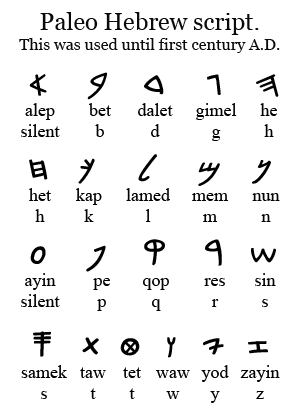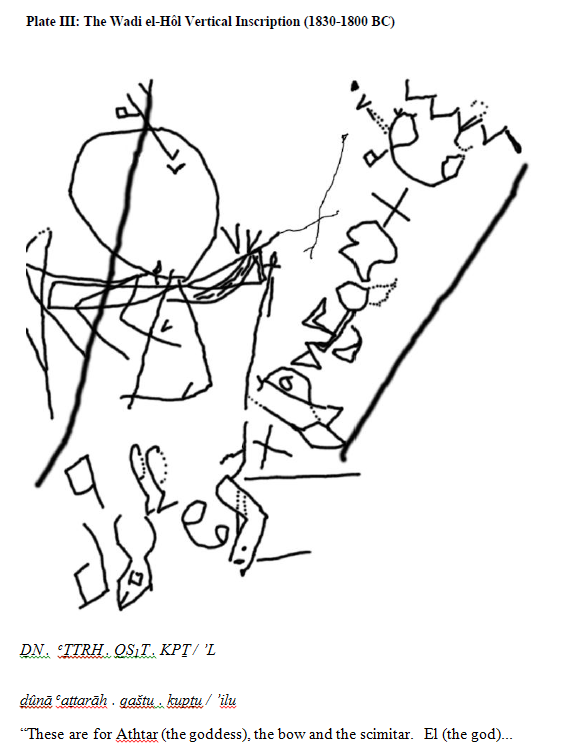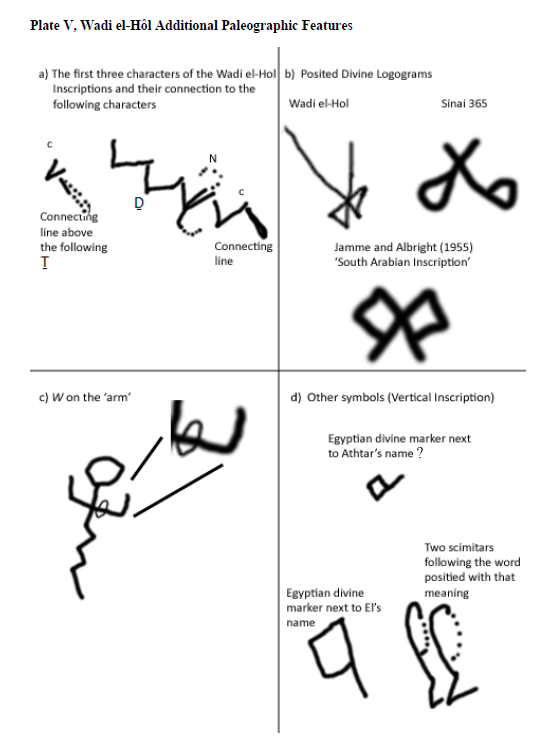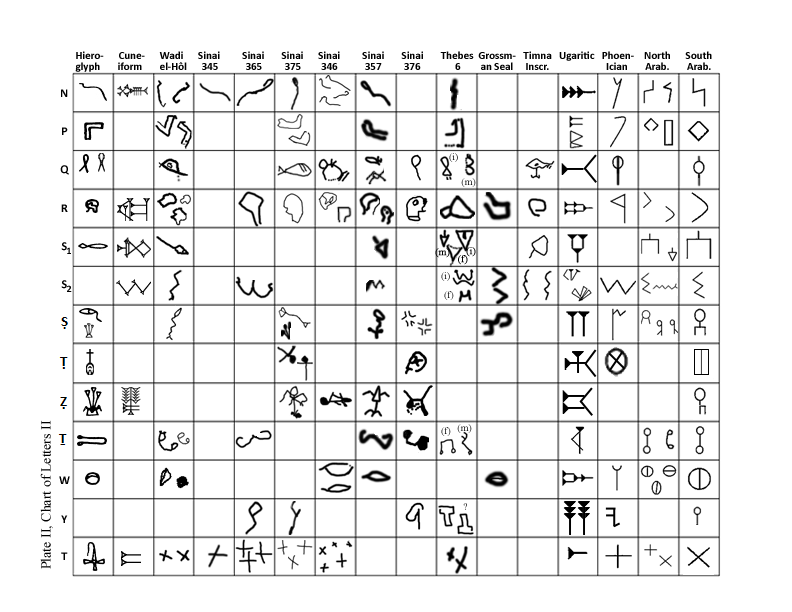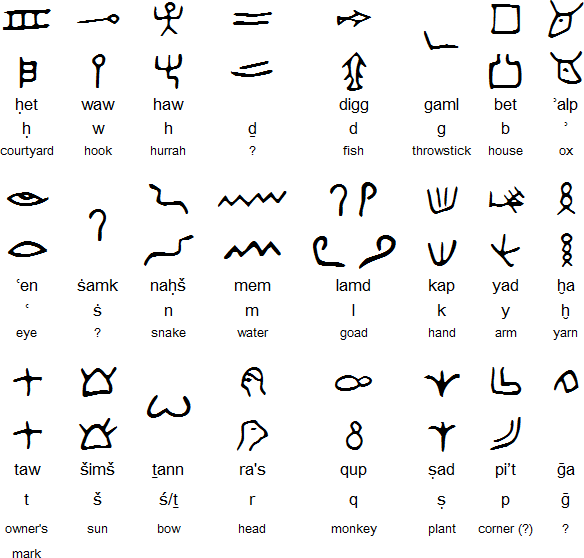Here is the Pictorial Hebrew (above) and the Babylonian "square" Script:
Also, the "arm with hand" is more anciently an Egyptian hieroglyphic symbol for the syllabic sound "Ah", (technically not a primary letter). After searching over the past several days I have not been able to actually find any real evidence that the yodh was even written in the "Hyksos" Proto-Sinaitic script with an "arm and hand" as your image file shows. Although there is plenty of speculation there are also plenty more who disagree and some sites which entirely avoid discussing the yodh because apparently there is not enough evidence to show that it was indeed the symbol of the arm and hand. Thus you might not even have the spelling correct in your interpretation of the Name, (going by the image file you have provided), because the "arm and hand" may actually have been the symbol for the sound "Ah" taken straight from well known older Egyptian hieroglyphics. It is difficult to see how anyone can claim they know any of these things for sure because it is all speculative; some good, and some not so good.

Egyptian Hieroglyphic Alphabet
You might do better to start guessing along the lines of the reed symbol:
Egyptian Hieroglyphic Alphabet
It is possible that the two strokes at the top of the later Paleo Yodh may have originally stood for two reeds:
It is also possible that the bottom stroke of the Paleo Yodh may have developed over a relatively short time by way of the simple process of scribes copying scrolls, (writing from the right to the left this would make sense if the yodh was written starting with a bottom stroke of the stem, upwards, and finishing with the two strokes at the top of the letter).
https://planofgod.wordpress.com/2012/07/15/ktav-ivrit-the-ancient-hebrew-alphabet/
Moreover, Jeff A. Benner, (from the video in the opening post), references Dr. Douglas Petrovich on his website, (
here), who himself suggests that the symbol of the "man with his hands raised" equates to the word halal, (praise, joy, halal, hallu, and so on), and thus the supposed reasoning for the several different versions of the man with his hands raised. But not even he suggests that the original root word that is used for each letter should be rendered as a meaning for the letter.
The translation provided in the image file you have posted is therefore not even correct to begin with, "behold the nail behold the arm / hand", because, for one, it reads backwards in English; and for two, the "arm and hand" glyph is unproven as to whether it even belongs in the Name because the Name is found nowhere written in the Proto-Sinaitic script; and for three, the "arm and hand" glyph might not even be the "Y" sound but rather the "Ah" syllabic sound taken straight from previously well known Egyptian hieroglyphs; and fourthly, there is visual evidence to the contrary from the Egyptian hieroglyph for the "Y" sound, (two reeds), and "I" sound, (one reed), and from the Paleo Hebrew texts for the Yodh as shown above herein, (which is also yet nothing more than speculative), and furthermore, fifthly, the letter "He" is supposedly, (by Dr. D. Petrovich), not from a root meaning "to behold" but rather "to celebrate", or "to rejoice", or even or "to praise", (halal), but last of all, and most importantly: the reason Egyptian hieroglyphs took so long to understand and interpet is because for a very long time scholarship thought the symbols represented whole words instead of the first letter of each word which the pictorial glyphs represented. This is the very same thing your image file is doing, and it is fallacy: the letter "He" does not stand for "halal" or "praise" or "rejoice", or even "behold", and so on, but rather it only stands for the letter "He", (the sound made with that letter). Likewise the "arm and hand", (if it is even supposed to be there, as you presume), would not stand for "yad", or "hand", (as in "behold the hand"), but rather only stands for the letter Yodh, (the "Y" sound).





